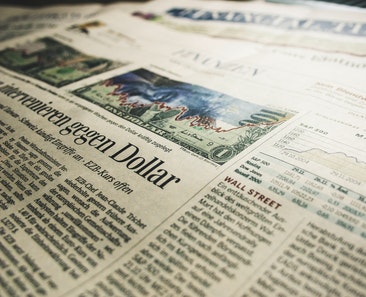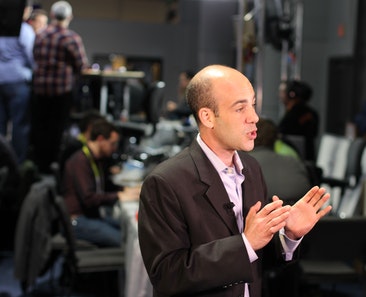Federal Reserve Keeps Interest Rates Unchanged, Signals 2 Cuts This year

By Andrew Moran
The Federal Reserve kept interest rates unchanged for the fourth straight meeting on June 18, a decision that financial markets widely expected.
The U.S. central bank left the benchmark federal funds rate—a key policy rate that influences consumer borrowing costs and the U.S. government’s debt-servicing payments—at a range of 4.25 percent to 4.5 percent.
Officials say that economic activity and labor market conditions remained “solid,” adding that inflation continues to be “somewhat elevated.”
“Uncertainty about the economic outlook has diminished but remains elevated,” the Federal Reserve said in a post-meeting statement.
Speaking to reporters at the post-meeting press conference, Fed Chair Jerome Powell reiterated that monetary policy is “well positioned to wait” before restarting the central bank’s easing cycle.
“For the time being, we are well-positioned to wait to learn more about the likely course of the economy before considering any adjustments to our policies,” Powell said.
He noted that it takes time for tariffs to work their way through the economy before impacting consumer prices. At the same time, levies are raising near-term inflation expectations.
“A good example of that would be goods being sold at retailers today may have been imported several months ago before tariffs were imposed. So we’re beginning to see some effects, and we do expect to see more of them over the coming months,” Powell said.
“Beyond the next year or so, however, most measures of longer-term expectations remain consistent with our 2 percent inflation goal.”
At the end of the June policy meeting, the Fed released updates to the Summary of Economic Projections, a quarterly survey of officials that forecasts the economy and monetary policy.
Federal Reserve Board members and regional central bank presidents still anticipate two interest rate cuts this year, with the median federal funds rate expected to finish 2025 at 3.9 percent.
Median forecasts signal higher interest rates than expected over the next two years. In 2026, the key rate is penciled in to be 3.6 percent, up from the March update of 3.4 percent. In 2027, the policy rate is projected to be 3.4 percent, up from 3.1 percent.
The Fed expects economic growth to slow to 1.4 percent this year and 1.6 percent in 2026, down from its March estimates of 1.7 percent and 1.8 percent, respectively.
On the labor front, the unemployment rate is predicted to rise to 4.5 percent this year, slightly above the previous forecast of 4.4 percent.
Officials have also predicted that inflation will be higher. The Personal Consumption Expenditures (PCE) price index, which is the institution’s preferred inflation measure, is expected to rise to 3 percent. Core PCE, which strips out the volatile energy and food categories, could rise to 3.1 percent.
Policymakers had projected in March that PCE and core PCE would climb to 2.7 percent and 2.8 percent, respectively.
Market Reaction
U.S. stocks pared their gains shortly after the Fed decision.
Yields on Treasury securities were mixed, with the benchmark 10-year yield sliding below 4.38 percent.
The U.S. Dollar Index, a measure of the greenback against a weighted basket of currencies such as the British pound and Japanese yen, tumbled by about 0.1 percent.
“The Fed continues to overplay the inflation story and isn’t paying attention to burgeoning demand weakness,” Jamie Cox, a managing partner for the Harris Financial Group, said in a note emailed to The Epoch Times. “While the dot plot forecasts 3 rate cuts through 2026, the more likely scenario is 3 rate cuts by the end of 2025.”
Byron Anderson, the head of fixed income at Laffer Tengler Investments, says the Fed appears to be “willing to sacrifice employment and GDP growth” before changing its policy stance.
“Interest rates are already biting the main inflation driver coming out of COVID, which was housing,” Anderson said in a note emailed to The Epoch Times. “CPI and PCE should see further disinflation from housing over the next year as inventories continue to increase and prices start to decrease.”
Differences on Inflation
President Donald Trump doubted the Fed would cut interest rates following the two-day policy meeting.
Speaking to reporters outside the White House for a flag-raising event, Trump criticized Powell, saying, “he’s costing the country a fortune.”
Reiterating his previous suggestion, Trump stated that if Powell is concerned about inflation rising because of tariffs, then the institution can raise interest rates again.
“If he’s worried about inflation, that’s OK. I understand that. I don’t think there’s going to be any. So far there hasn’t,” Trump said.
“But now we have a man that just refuses to lower the Fed rate. … I don’t even think he’s that political. I think he hates me, but that’s OK.”
Recent economic data show that consumer prices rose by 0.1 percent in May, less than expected. Wholesale inflation was also subdued, with producer prices rising at a less-than-expected pace of 0.1 percent. Trade data also highlighted that import prices remained flat, while export prices declined by 0.9 percent.
Later this month, the Fed’s preferred inflation gauge, the PCE is expected to show a 0.1 percent increase.
Because tariffs can operate with a lag, Fed officials say they can afford to be patient in determining whether the administration’s sweeping levies will revive price pressures across the economy.
“I continue to believe the best approach for monetary policy is patience,” Atlanta Fed President Raphael Bostic said in a June 3 essay. “As the economy remains broadly healthy, we have space to wait and see how the heightened uncertainty affects employment and prices.”
Federal Reserve Gov. Lisa Cook stated in a June 3 speech at the Council on Foreign Relations that she anticipates tariffs will eventually reverse the recent inflation trends, which may complicate the central bank’s rate-setting policy.
“Price increases tied to changes in trade policy may make it difficult to achieve further progress in the near term,” Cook said. “The recent post-pandemic experience with high inflation could make firms more willing to raise prices and consumers more likely to expect high inflation to persist.”
In April, Powell cautioned that while tariffs would likely generate “a temporary rise in inflation,” higher import duties could also make inflation “more persistent.”
This, he says, could threaten the central bank’s twin mandate of price stability and maximum employment simultaneously.
“We may find ourselves in the challenging scenario in which our dual-mandate goals are in tension,” Powell said at an event hosted by the Economic Club of Chicago. “If that were to occur, we would consider how far the economy is from each goal, and the potentially different time horizons over which those respective gaps would be anticipated to close.”
The futures market is also factoring this position into its forecasts.
According to the CME FedWatch Tool, investors are betting on a 59 percent chance of a quarter-point rate cut in September.



